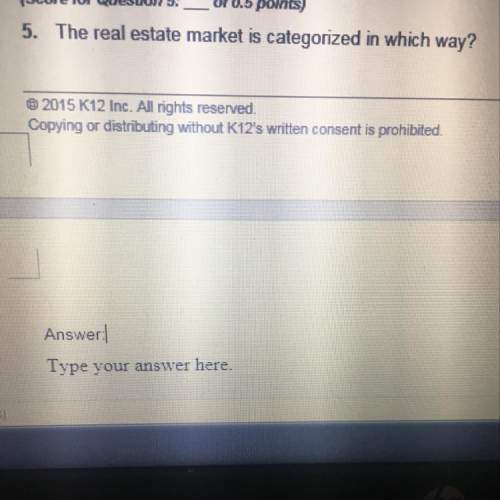
Business, 21.12.2021 23:50 leximae5391
An institutional hedge fund customer has invested $100 million with your brokerage firm in the Madison Family of Funds. Madison allows its shareholders to exchange shares of any fund within the family at no charge. NAV of each fund in the family is computed as of 4:00 PM ET. The fund processes orders received until 4:30 PM ET each day. A representative with an institutional hedge fund client notices that this customer has been placing daily orders at 4:15 PM to exchange fund shares within the family. Which statement is TRUE regarding this situation?
a. The registered representative should make the customer aware of the tax consequences of exchanging mutual fund shares
b. It appears that the hedge fund customer is engaging in the prohibited practice of late trading of mutual fund shares
c. Because the customer is a large institutional investor, it qualifies for a "sophisticated customer" exemption from regulatory oversight
d. This institutional customer has violated its fiduciary responsibility to the other shareholders of the fund by engaging in the prohibited practice of market timing of mutual fund shares

Answers: 3


Another question on Business

Business, 22.06.2019 04:30
Galwaysc electronics makes two products. model a requires component a and component c. model b requires component b and component c. new versions of both models are released each year with updated versions of all components. all components are sourced overseas, and abc contracts annually for a quantity of each component before seeing that year’s demand. components are only assembled into finished products once demand for each model is known. for the coming year, alwaysc’s purchasing manner has proposed ordering 500,000 units of component a, 630,000 of component b, and 1,000,000 units of component c. her boss has asked why she has recommended purchasing so much of components a and b when alwaysc will not have enough of component c to fully use all of the inventory of a and b. what factors might the purchasing manager cite to explain her recommended order? explain your reasoning.
Answers: 3

Business, 22.06.2019 19:10
Imagine us is a startup that offers high definition 3d prenatal ultrasounds for high-end customers. the service process includes four activities that are conducted in the sequence described below. (the time required for each activity is shown in parentheses): activity 1: welcome a patient and explain the procedure. (20 minutes)activity 2: prep the patient (e.g., show them to the room, apply ultrasound gel). (17 minutes) (*your id number represents the amount of time needed to complete this task)activity 3: take images. (5 minutes)activity 4: discuss diagnostic with patient. (20 minutes)at each location there are employees (servers) s1, s2, and s3. the assignment of tasks to servers is the following: s1 does activities 1 and 2.s2 does activity 3.s3 does activity 4.a. what is the capacity of this process (in customers per hour)? b. suppose 3 patients arrive every hour on average. ignoring any “start of day” or “end of day” effects, what are the utilizations of all three servers (%)? c. suppose each activity can be done by any server and any server can do any set of activities. however, each activity is done by only one server. for example, a possible assignment includes: s1 does activity 1, s2 does activity 2, and s3 does activities 3 and 4. of course, the original assignment of servers to activities is also feasible. what is the maximum capacity of the process (in customers per hour)? d. now consider the capacity measures in (c) and (a), what is the percentage change? why can you improve capacity without using additional resources? (there is no free lunch, right? )note: for all hw assignments, show your process of getting the results. only providing the final answers is not acceptable and will get 0%. if necessary, use a separate sheet of paper to show your work.
Answers: 3

Business, 22.06.2019 20:00
What is the difference between total utility and marginal utility? a. marginal utility is subject to the law of diminishing marginal utility while total utility is not. b. total utility represents the consumer optimum while marginal utility gives the total utility per dollar spent on the last unit. c. total utility is the total amount of satisfaction derived from consuming a certain amount of a good while marginal utility is the additional satisfaction gained from consuming an additional unit of the good. d. marginal utility represents the consumer optimum while total utility gives the total utility per dollar spent on the last unit.
Answers: 3

Business, 22.06.2019 22:00
Your sister turned 35 today, and she is planning to save $60,000 per year for retirement, with the first deposit to be made one year from today. she will invest in a mutual fund that's expected to provide a return of 7.5% per year. she plans to retire 30 years from today, when she turns 65, and she expects to live for 25 years after retirement, to age 90. under these assumptions, how much can she spend each year after she retires? her first withdrawal will be made at the end of her first retirement year.
Answers: 3
You know the right answer?
An institutional hedge fund customer has invested $100 million with your brokerage firm in the Madis...
Questions







Mathematics, 17.01.2020 06:31






Mathematics, 17.01.2020 06:31



Mathematics, 17.01.2020 06:31

Biology, 17.01.2020 06:31

Health, 17.01.2020 06:31

Mathematics, 17.01.2020 06:31




